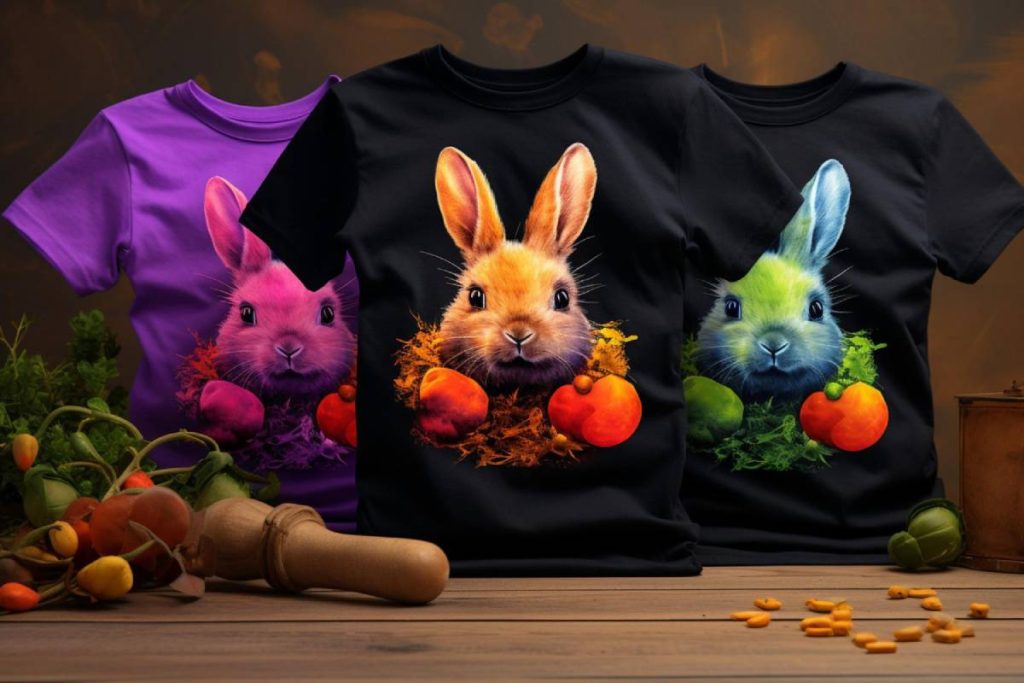DTF printing, or Direct-to-Film printing, is reshaping the landscape of fabric design with its innovative approach to transferring vibrant images onto textiles. This advanced printing technique stands out, offering numerous benefits that appeal to businesses aiming to streamline their printing processes and elevate product quality. Among the driving advantages of DTF printing are its high-resolution outputs and lasting durability, which are becoming essential in a competitive market that demands both precision and resilience. Furthermore, DTF printing provides eco-friendly printing solutions using sustainable inks and materials, ensuring that businesses can meet consumer expectations for environmentally responsible practices. In this article, we will explore the multitude of advantages that DTF printing offers and how it can significantly enhance your business’s product offerings and overall efficiency.
Also known as direct film transfer printing, this cutting-edge technology allows for seamless designs to be applied onto various fabrics, revolutionizing how custom printing solutions are developed. The versatility of this process caters to a wide array of textile materials, empowering businesses to produce garments that resonate with their target audience’s preferences. With the rising demand for personalized and unique apparel items, the advantages of this printing method shine through, enabling brands to create bespoke fashion pieces with ease. Moreover, its focus on eco-friendly printing solutions aligns with the current trends of sustainability in the fashion industry, further enticing customers who value environmental responsibility. Overall, this modern approach to printing not only enhances the quality and durability of products but also positions businesses to thrive amidst growing market demands.
Understanding the Basics of DTF Printing
Direct-to-Film (DTF) printing is an innovative method that allows for the rapid transfer of high-resolution images onto textiles, utilizing a unique film and adhesive mechanism. This technique stands as an evolution from traditional printing processes, offering businesses a versatile solution suitable for various fabric types, including cotton, polyester, and even blends. The ease of use and time efficiency of DTF printing make it a compelling choice for businesses aiming to streamline their production workflows.
Incorporating DTF printing into operations not only enhances the quality of the output but also significantly reduces the complexity involved in print preparation. Unlike other methods that require intricate setups, DTF simplifies the workflow by allowing designs to be printed directly onto specialized films. This shift transforms the way businesses can approach fabric printing, aligning well with the needs of the modern market and helping companies remain competitive.
The Advantages of DTF Printing for Businesses
One of the standout advantages of DTF printing is its capability to produce high-quality prints that are both vibrant and durable. The printing process ensures that colors stand out vividly, with durability that withstands both wear and washing. This level of quality is crucial for businesses, as it affects customer satisfaction and can lead to repeat sales. Furthermore, the soft feel of DTF prints means that they do not compromise on comfort, a key factor for apparel consumers.
DTF printing’s cost-effectiveness adds another layer of appeal for businesses. With lower startup expenses and the ability to handle small batch orders, companies can easily fulfill unique customer requests. This flexibility not only reduces the financial burden associated with maintaining large inventories but also allows for greater agility in responding to market trends.
Customization with DTF Printing
Customization is pivotal in today’s market where consumers seek unique products that reflect their individuality. DTF printing excels in this regard, providing businesses with the necessary tools to create personalized items efficiently. This method allows for intricate designs to be realized with precision, catering to specific customer preferences, whether for promotional items or bespoke fashion pieces.
Moreover, the level of personalization achievable with DTF printing fosters a stronger customer connection. By offering tailored solutions, businesses can differentiate themselves from competitors and engage customers on a more personal level. This not only enhances brand loyalty but also encourages word-of-mouth marketing, which is invaluable for growth in an increasingly competitive landscape.
Eco-Friendly Practices in DTF Printing
In an age where environmental consciousness is paramount, DTF printing aligns well with eco-friendly initiatives. Many DTF solutions utilize water-based inks and sustainable films, significantly reducing the ecological footprint of the printing process. This commitment to sustainable practices is not only beneficial for the planet but serves to enhance a brand’s image among eco-minded consumers.
Businesses that adopt DTF printing as part of their production strategy can appeal to a broader audience, particularly younger demographics who prioritize sustainability. By highlighting eco-friendly aspects in marketing materials, companies can cultivate a reputation that resonates with consumers’ values, ultimately leading to increased brand trust and loyalty.
Simplified Workflow and Efficiency
The workflow involved in DTF printing is notably streamlined compared to traditional methods. One of the major pain points in conventional printing is the necessity for color separations and extensive screen setups, which can be both time-consuming and costly. DTF technology mitigates these issues by allowing for a straightforward application process, ultimately reducing lead times and enhancing overall productivity.
With DTF printing, businesses can expect quicker turnaround times, enabling them to meet tight deadlines and respond swiftly to consumer demands. This efficiency is critical in today’s fast-paced market, where the ability to quickly adapt to trends can significantly influence a company’s success.
Recent Innovations in DTF Technology
The landscape of DTF printing technology is constantly evolving, with ongoing innovations that improve speed and quality. Recent advancements in printer specifications and ink formulations have made it possible to achieve even higher resolution prints while also decreasing production costs. Keeping abreast of these developments can provide businesses with a competitive edge, as leveraging the latest technologies can enhance service capabilities and overall output quality.
As DTF technology continues to advance, businesses that invest in modern equipment and techniques can expect to see improvements in not only efficiency but also customer satisfaction. By prioritizing innovation, companies can position themselves as leaders in the textile and apparel industry, tapping into new market opportunities driven by technological progress.
Frequently Asked Questions
What are the benefits of DTF printing for my business?
DTF printing offers several benefits including high-quality prints, versatility on different fabric types, and cost-effectiveness. Businesses can produce vibrant designs that are resistant to damage while catering to a variety of fabric options without investing in multiple printing technologies.
How does DTF printing compare to traditional printing methods?
DTF printing simplifies the workflow by eliminating color separations and screens, making it quicker and more efficient than traditional methods. This innovation not only reduces production time but also lowers costs, particularly beneficial for small batch custom printing solutions.
Is DTF printing eco-friendly?
Yes, many DTF printing solutions use water-based inks and environmentally friendly films, making them a sustainable option. This eco-friendly aspect appeals to consumers who prioritize sustainability, enhancing your brand’s reputation in a competitive market.
What types of fabrics can be used with DTF printing?
DTF printing is highly versatile and can be applied to various fabrics including cotton, polyester, and blends. This adaptability enables businesses to explore diverse product lines and meet market demands effectively.
Can DTF printing accommodate customization and personalization?
Absolutely! DTF printing allows for high levels of customization and personalization, enabling businesses to create tailored items that resonate with individual customer preferences. This capability enhances customer engagement and differentiation in the marketplace.
What recent developments should businesses know about DTF printing technology?
Recent advancements in DTF printing technology include improvements in printer capabilities and ink formulations that enhance speed and print quality. Staying updated on these developments can provide competitive advantages and improve overall production efficiencies.
| Key Benefits of DTF Printing | |
|---|---|
| High-Quality Prints | Ensures vibrant colors and excellent detail; soft to the touch and resistant to cracking or peeling. |
| Versatility Across Fabric Types | Applicable to a wide range of fabrics, including cotton and polyester, allowing diverse product offerings. |
| Simplified Workflow | Eliminates color separations and screens, reducing setup time and streamlining production processes. |
| Cost-Effectiveness | Lower startup costs and the ability to handle small batch runs make it ideal for custom orders. |
| Eco-Friendly Practices | Uses water-based inks and environmentally friendly films, appealing to eco-conscious consumers. |
| Customization and Personalization | Allows for tailored items and bespoke designs, enhancing customer engagement and differentiation. |
Summary
DTF printing is an innovative technique that offers numerous benefits to businesses in the textile industry. This method enables the transfer of vibrant, high-quality designs onto a variety of fabrics, meeting the demand for customization and eco-friendly practices. With its cost-effectiveness and simplified workflow, DTF printing not only enhances product offerings but also boosts overall operational efficiency. By adopting DTF printing, companies can position themselves strategically in the competitive apparel market, catering to evolving consumer preferences while maintaining a focus on quality and sustainability.



